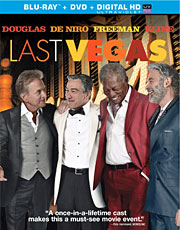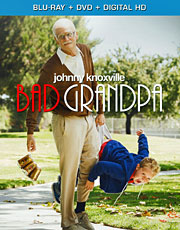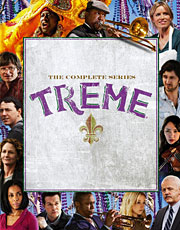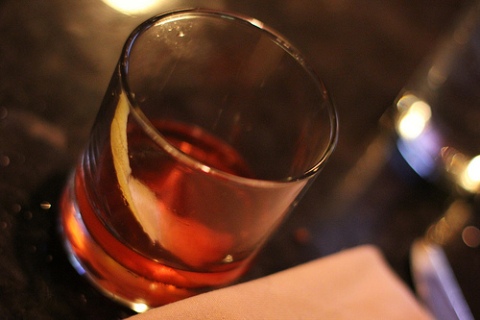Blu Tuesday: Rush, Last Vegas and More
Every Tuesday, I review the newest Blu-ray releases and let you know whether they’re worth buying, renting or skipping, along with a breakdown of the included extras. If you see something you like, click on the cover art to purchase the Blu-ray from Amazon, and be sure to share each week’s column on Facebook and Twitter with your friends.
WHAT: The true story of the 1976 Formula One racing season and the heated rivalry between British playboy James Hunt (Chris Hemsworth) and reigning World Champion Niki Lauda (Daniel Brühl), the latter of whom was involved in a near-fatal accident, only to miraculously return to competition six weeks later despite suffering severe burns to his face and body.
WHY: It doesn’t take a genius to figure out that Ron Howard and Peter Morgan love history. The latter, in particular, is responsible for writing some of the best historical dramas of the past decade, but sadly, “Rush” is not one of them. Though there’s a lot to like about the duo’s latest movie – particularly the chemistry and performances of its two leading men – it’s not nearly as captivating as their last collaboration (“Frost/Nixon”). One thing that the film does do a good job of is giving Daniel Brühl and Chris Hemsworth equal screen time, but the best moments are the scenes they share together. The actors play off each other wonderfully, although Brühl has the juicier role due to his character’s more dramatic story arc. What’s perhaps most impressive about “Rush,” though, is the way that Howard and Morgan have crafted the story so that both men “win” in the end. It’s a tricky proposition, but they pull it off, and that goes a long way in making up for the lack of exciting race sequences. F1 racing fans will no doubt be disappointed, but “Rush” is still a well-acted drama that’s biggest problem is perhaps being a tad too conventional.
EXTRAS: The Blu-ray release includes a making-of featurette, a behind-the-scenes look at the real-life story that inspired the film, a profile on director Ron Howard and some deleted scenes.
FINAL VERDICT: RENT
WHAT: Billy (Michael Douglas), Paddy (Robert De Niro), Archie (Morgan Freeman) and Sam (Kevin Kline) have been friends for nearly 60 years, so when Billy announces that he’s finally getting married, the guys decide to take a break from their stagnant day-to-day lives and throw a bachelor party in Las Vegas.
WHY: “Last Vegas” may sound like the geriatric version of “The Hangover,” but apart from being about a quartet of friends attending a bachelor party in Vegas, the two films don’t have very much in common. For starters, “Last Vegas” isn’t nearly as crazy and over-the-top as the Todd Phillips comedy, instead resigned to more conventional humor that’s better suited to its veteran actors. It also has a tendency to get a little overly sentimental at times due to its subject matter, but that’s not to say it isn’t funny. Michael Douglas and Robert De Niro may not get as many opportunities to earn laughs due to their more dramatic subplots, but Morgan Freeman and Kevin Kline pick up the slack, especially Freeman, who plays a great drunk. Though the old man jokes get a bit tiresome and the cookie cutter storyline is pretty lame, “Last Vegas” thrives thanks to its impressive cast. You’d be hard-pressed to assemble a better group of screen legends than these four, and just seeing them on screen together makes it well worth your time.
EXTRAS: There’s an audio commentary by director Jon Turteltaub and writer Dan Fogelman and six short production featurettes, three of which are Blu-ray exclusives.
FINAL VERDICT: RENT
WHAT: After his wife dies and his daughter is sent back to prison, 86-year-old Irving Zisman (Johnny Knoxville) is tasked with driving his 8-year-old grandson Billy (Jackson Nicoll) from Nebraska to North Carolina to deliver him to his father.
WHY: The “Jackass” movies have always made me laugh, but I’ve never been a fan of the Irving Zisman character, so when Paramount announced that Johnny Knoxville would be making an entire movie as the dirty old man, it seemed like a pretty dumb idea. And for the most part, “Bad Grandpa” is dumb, but it also made me laugh louder than a majority of the comedies released last year. Clearly inspired by Sacha Baron Cohen’s “Borat” in its attempt to structure various pranks around a scripted story, “Bad Grandpa” is better off when Knoxville is just allowed to do his thing. Whether getting squished by a faulty adjustable bed at an estate sale, causing a ruckus at a local bingo center, stealing food from a corner store or hitting on ladies (and then performing) at an all-black male strip club, the Knoxville-led pranks hit their mark more often than not. The stuff with Jackson Nicoll isn’t nearly as entertaining – except for the final sequence where Irving and Billy crash a child beauty pageant – but “Bad Grandpa” earns enough big laughs along the way to make up for its shortcomings.
EXTRAS: In addition to an unrated cut of the film, there’s over an hour of bonus material, including deleted scenes, alternate real-life reactions and some behind-the-scenes antics.
FINAL VERDICT: RENT
You can follow us on Twitter and Facebook for content updates. Also, sign up for our email list for weekly updates and check us out on Google+ as well.
Posted in: Entertainment, Movies
Tags: Bad Grandpa, Blu Tuesday, Cloudy with a Chance of Meatballs 2, Last Vegas, new Blu-rays, Rush, The Fifth Estate, Treme





 It might seem a bit odd, but it was current MSNBC political goddess and past Air America star Rachel Maddow whose radio “cocktail moments” largely propelled your loyal scribe’s fledgling interest in
It might seem a bit odd, but it was current MSNBC political goddess and past Air America star Rachel Maddow whose radio “cocktail moments” largely propelled your loyal scribe’s fledgling interest in 








